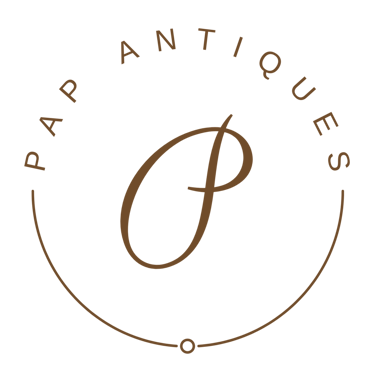Preserving Elegance
5 Hazards to Keep Away from Your Antique Furniture
2/2/20242 min read


The 5 Elements Your Antique Furniture Wishes to Avoid
Antique furniture carries not just the weight of its physical form but also the depth of history and artistry. These timeless pieces aren’t merely objects; they are stories and legacies encapsulated in wood, metal, and fabric. However, certain everyday elements can become foes to the longevity and beauty of your treasured antiques. Understanding what your antique furniture really doesn’t like is the first step towards preserving its elegance for generations to come.
1. The Sun’s Unforgiving Rays
Direct sunlight can be an antique’s worst enemy. Prolonged exposure to UV rays can fade and damage the delicate finishes, fabrics, and wood of your antique pieces. The sun can dry out and crack wood, bleach out the rich colors of fabrics, and cause veneers, inlays, and glue joints to deteriorate over time. Positioning your furniture away from direct sunlight or using UV-filtering window films can help protect your antiques from these harmful rays.
2. The Swings of Temperature and Humidity
Antique furniture prefers a stable environment. Fluctuations in temperature and humidity can lead to wood expanding and contracting, which may cause cracks, warping, and weakened joints. It’s best to keep your precious pieces in a climate-controlled setting, away from heating vents, fireplaces, or damp areas that could introduce a flux in conditions they’re exposed to.
3. The Unseen Enemy: Dust and Grime
While dust may seem harmless, it can be abrasive and, over time, wear down the finish of your antique furniture. Regular, gentle dusting with a soft, lint-free cloth can prevent buildup. Avoid harsh chemical cleaners or sprays that can strip finishes and degrade the fabric. Instead, opt for mild, wood-friendly cleaners and conditioners that preserve the natural beauty of your pieces.
4. The Silent Assailants: Pests and Mould
Woodworms, termites, and mould can be disastrous to antique furniture. These silent destroyers can compromise the structural integrity and surface finish of your pieces. Regular inspections can help catch any infestation early. Ensure your home is well-ventilated and your furniture is kept dry to prevent the conditions that attract these pests and mould.
5. The Touch of Time: Wear and Tear
Everyday use can lead to scratches, stains, and dents on your cherished antiques. While it’s impossible to completely avoid wear and tear, it can be minimized. Use placemats or coasters to protect surfaces from spills and heat marks, employ tablecloths or runners to shield against scratches, and rotate your cushions and rugs to distribute wear evenly.
Preserving Your Treasures: A Partnership in Care
Your antique furniture is not just an asset; it’s a testament to craftsmanship and history. While the passage of time and the elements outlined may pose challenges, the beauty and integrity of your antiques can be preserved with attentive care and the right measures.
Should the ravages of time leave their mark, the skilled team at Papantiqes is here to assist. Our experts specialize in restoring damaged pieces to their former glory, ensuring that the legacy and beauty of your furniture endure. However, remember, the best preservation comes from preventative care. By being mindful of these common threats and adopting proactive measures, you can minimize the need for restorative efforts.
Cherish your antiques, not just as furnishings but as irreplaceable links to the past. Should you need support or guidance, the Papantiques team stands ready to partner with you in safeguarding the elegance and history of your cherished pieces.
Let’s ensure that your antiques continue to tell their stories for generations to come.
Pap Antiques Ltd
Finest Antique and Mid-Century Furniture with expert restoration support.
+44(0)7521 666 758
Copyright © 2024. Pap Antiques & Restoration Ltd.
